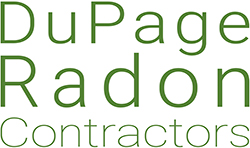You may test for radon with a do-it-yourself test kit or hire a professional company to perform your radon test for you. In either case, available literature or explanations from professionals may be insufficient to help you in fully understanding radon test results and what they mean.
We want you to make an informed decision about radon in your home or business. Use this guide on how to read radon test results to determine your risk and how you would like to proceed.
How Radon Is Measured
The first step to interpreting radon test results is understanding how radon is measured. Radon levels are measured in pico-Curies per liter of air (pCi/L), which is a measure of one trillionth, or 0.000,000,000,001, Curies present in a single liter of air. A Curie is an internationally recognized unit of radioactivity determined by a formula that tells us the number of decays per second of active radium.
The Curie is an intentionally large measurement. It measures on a much higher scale than what is initially considered dangerous to human health, so we use pico-Curies in radon testing to narrow the scale to human levels and aid in the understanding of radon test results.
Per pico-Curie, each decay of radium produces a micro-explosion that damages living tissue. While we cannot see these radioactive reactions happening with our eyes, they affect our body’s cells, especially those of the lungs. Long-term exposure has been shown to increase risk of lung cancer.
Interpreting Your Radon Test Results
Learn what the number of pico-Curies per liter means as it relates to the risk of damage and disease in your home or business.
Greater than or Equal to 4.0 pCi/L
Above 4.0 pCi/L, you are putting yourself at unusually high risk for lung damage and cancer. This levels is roughly the same lung cancer exposure risk as smoking half a pack of cigarettes a day. In almost all situations, the Environmental Protection Agency (EPA) recommends immediate installation of a radon mitigation system to lower your risk. If you are testing radon in conjunction with the sale of the building, 4.0 is typically used as the threshold radon level.
Between 2.7 and 4.0 pCi/L
When reading your radon test results, it is worth noting that even though EPA indicates 4.0 pCi/L, the World Health Organization (WHO) recommends mitigation at or over 2.7 pCi/L. If you are testing for you own safety, as opposed to selling the building, you may consider mitigation when you are in this range.
One factor to consider at this level is the amount of time spent in the lowest floor of your home. Another is the actual height of your nose above the floor while in that area. Anyone who sits or lays down for extended periods while in those areas will receive a higher radon dose than those standing. Children, especially crawling children, are more affected because of the proximity of their noses to the floor.
It is also helpful to know that radon levels reduce by about in half each floor up the building. In other words, a basement that measures a radon level of 16 pCi/L is likely to exhibit about a level of8 pCi/L on the first floor, and about a 4 pCi/L on the third floor.
Less than 2.7 pCi/L
This is a relatively low radon level. For reference, 0.4 pCi/L is the average level of natural outdoor radon as determined by Congress’s Radon Act 51.
Keeping Your Family Safe
The WHO Handbook on Indoor Radon posits that “most of radon-induced lung cancers occur from low and medium-dose exposures in people’s homes.” Understanding radon levels and the threat that radon poses is key to keeping you and your family safe.
DuPage Radon Contractors’ radon mitigation experts would like to reiterate that when reading your radon test results, you should keep in mind that radon poses a danger at even low levels. We care about the safety of you and your family, and would recommend testing for radon with a reputable testing company (DuPage Radon Contractors does not perform radon testing) and installing a radon mitigation system (DuPage Radon Contractors does expertly install radon mitigation systems) as quickly and as soon as possible. Get in touch with us today to find out how we can make your home safer.





